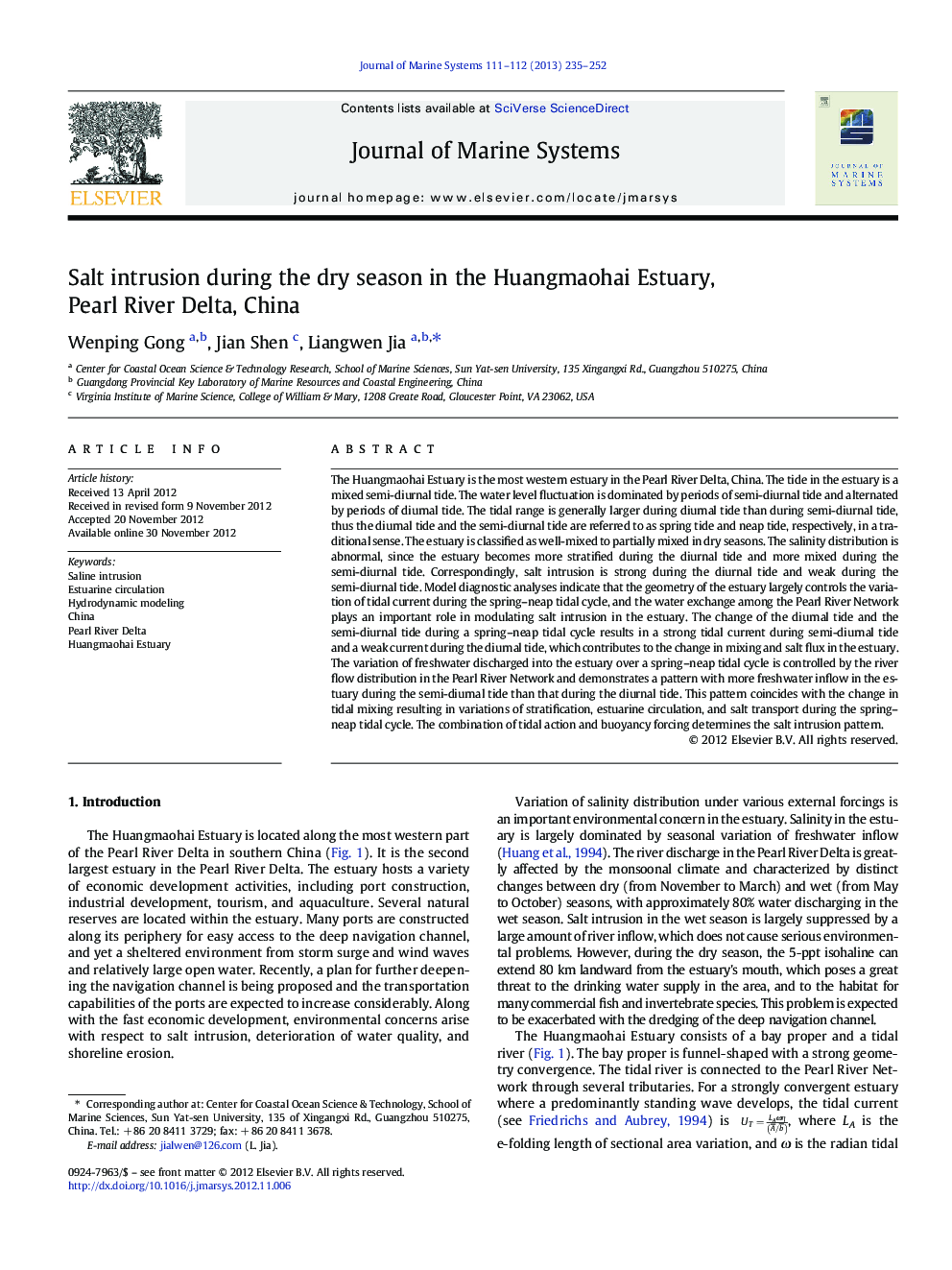| Article ID | Journal | Published Year | Pages | File Type |
|---|---|---|---|---|
| 4548185 | Journal of Marine Systems | 2013 | 18 Pages |
The Huangmaohai Estuary is the most western estuary in the Pearl River Delta, China. The tide in the estuary is a mixed semi-diurnal tide. The water level fluctuation is dominated by periods of semi-diurnal tide and alternated by periods of diurnal tide. The tidal range is generally larger during diurnal tide than during semi-diurnal tide, thus the diurnal tide and the semi-diurnal tide are referred to as spring tide and neap tide, respectively, in a traditional sense. The estuary is classified as well-mixed to partially mixed in dry seasons. The salinity distribution is abnormal, since the estuary becomes more stratified during the diurnal tide and more mixed during the semi-diurnal tide. Correspondingly, salt intrusion is strong during the diurnal tide and weak during the semi-diurnal tide. Model diagnostic analyses indicate that the geometry of the estuary largely controls the variation of tidal current during the spring–neap tidal cycle, and the water exchange among the Pearl River Network plays an important role in modulating salt intrusion in the estuary. The change of the diurnal tide and the semi-diurnal tide during a spring–neap tidal cycle results in a strong tidal current during semi-diurnal tide and a weak current during the diurnal tide, which contributes to the change in mixing and salt flux in the estuary. The variation of freshwater discharged into the estuary over a spring–neap tidal cycle is controlled by the river flow distribution in the Pearl River Network and demonstrates a pattern with more freshwater inflow in the estuary during the semi-diurnal tide than that during the diurnal tide. This pattern coincides with the change in tidal mixing resulting in variations of stratification, estuarine circulation, and salt transport during the spring–neap tidal cycle. The combination of tidal action and buoyancy forcing determines the salt intrusion pattern.
► We investigate salt intrusion dynamics in the Huangmaohai Estuary, China. ► The salt intrusion experiences unique fluctuations in spring–neap tidal cycles during dry seasons. ► The tidal current in the estuary is stronger during semi-diurnal tides than during diurnal tides. ► The lateral freshwater inflow from the Pearl River Network is larger during semi-diurnal tides. ► Both the changes in tidal mixing and freshwater inflow modulate the salt intrusion in the estuary.
